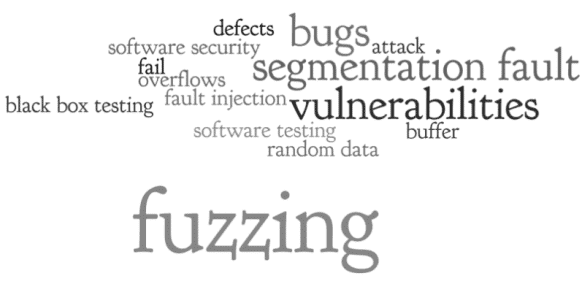radamsa: a test case generator for robustness testing

Radamsa
Radamsa is a test case generator for robustness testing, a.k.a. a fuzzer. It is typically used to test how well a program can withstand malformed and potentially malicious inputs. It works by reading sample files of valid data and generating interestingly different outputs from them. The main selling points of radamsa are that it has already found a slew of bugs in programs that actually matter, it is easily scriptable and easy to get up and running.
What the Fuzz
Programming is hard. All non-trivial programs have bugs in them. What’s more, even the simplest typical mistakes are in some of the most widely used programming languages usually enough for attackers to gain undesired powers.
Fuzzing is one of the techniques to find such unexpected behavior from programs. The idea is simply to subject the program to various kinds of inputs and see what happens. There are two parts in this process: getting the various kinds of inputs and how to see what happens. Radamsa is a solution to the first part, and the second part is typically a short shell script. Testers usually have a more or less vague idea what should not happen, and they try to find out if this is so. This kind of testing is often referred to as negative testing, being the opposite of a positive unit- or integration testing. Developers know a service should not crash, should not consume exponential amounts of memory, should not get stuck in an infinite loop, etc. Attackers know that they can probably turn certain kinds of memory safety bugs into exploits, so they fuzz typically instrumented versions of the target programs and wait for such errors to be found. In theory, the idea is to counterprove by finding a counterexample a theorem about the program stating that for all inputs something doesn’t happen.
There are many kinds of fuzzers and ways to apply them. Some trace the target program and generate test cases based on the behavior. Some need to know the format of the data and generate test cases based on that information. Radamsa is an extremely “black-box” fuzzer because it needs no information about the program nor the format of the data. One can pair it with coverage analysis during testing to likely improve the quality of the sample set during a continuous test run, but this is not mandatory. The main goal is to first get tests running easily and then refine the technique applied if necessary.
Radamsa is intended to be a good general purpose fuzzer for all kinds of data. The goal is to be able to find issues no matter what kind of data the program processes, whether it’s xml or mp3, and conversely that not finding bugs implies that other similar tools likely won’t find them either. This is accomplished by having various kinds of heuristics and change patterns, which are varied during the tests. Sometimes there is just one change, sometimes there a slew of them, sometimes there are bit flips, sometimes something more advanced and novel.
Radamsa is a side-product of OUSPG’s Protos Genome Project, in which some techniques to automatically analyze and examine the structure of communication protocols were explored. A subset of one of the tools turned out to be a surprisingly effective file fuzzer. The first prototype black-box fuzzer tools mainly used regular and context-free formal languages to represent the inferred model of the data.
Install
$ git clone https://github.com/aoh/radamsa.git
$ cd radamsa
$ make
$ sudo make install # optional, you can also just grab bin/radamsa
$ radamsa –help
Fuzzing with Radamsa
This section assumes some familiarity with UNIX scripting.
Radamsa can be thought as the cat UNIX tool, which manages to break the data in often interesting ways as it flows through. It has also support for generating more than one output at a time and acting as a TCP server or client, in case such things are needed.
Use of radamsa will be demonstrated by means of small examples. We will use the bc arbitrary precision calculator as an example target program.
In the simplest case, from a scripting point of view, radamsa can be used to fuzz data going through a pipe.
$ echo “aaa” | radamsa
aaaa
Here radamsa decided to add one ‘a’ to the input. Let’s try that again.
$ echo “aaa” | radamsa
ːaaa
Now we got another result. By default, radamsa will grab a random seed from /dev/urandom if it is not given a specific random state to start from, and you will generally see a different result every time it is started, though for small inputs you might see the same or the original fairly often. The random state to use can be given with the -s parameter, which is followed by a number. Using the same random state will result in the same data being generated.
$ echo “Fuzztron 2000” | radamsa –seed 4
Fuzztron 4294967296
This particular example was chosen because radamsa happens to choose to use a number mutator, which replaces textual numbers with something else. Programmers might recognize why for example this particular number might be an interesting one to test for.
Tutorial
Copyright (c) 2013 Aki Helin
Source: https://gitlab.com/akihe/





